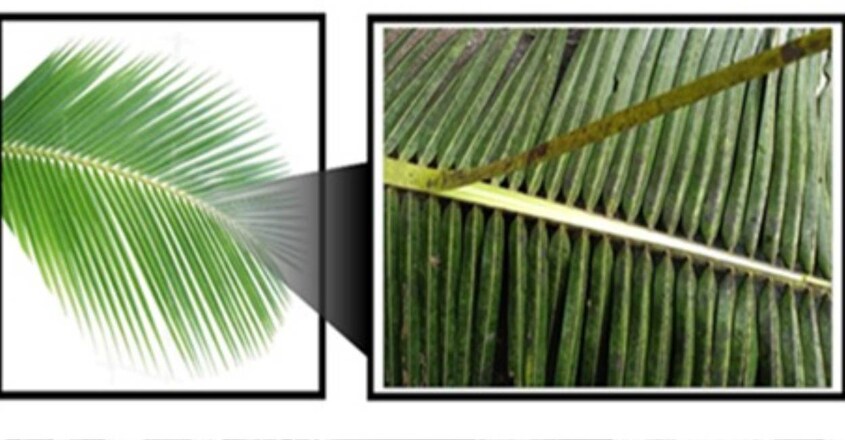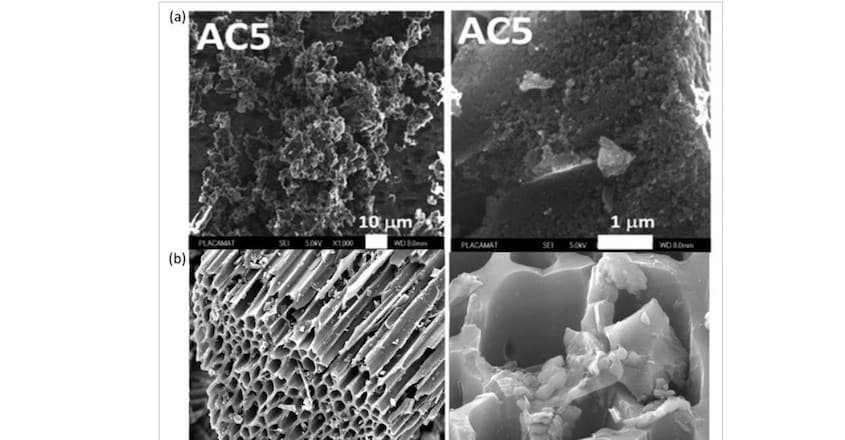From coconut waste to carbon wonder: Kerala researchers unlock energy bank in rachis

Mail This Article
Kollam: Researchers at Amrita Vishwa Vidyapeetham have fired up a rare activated carbon structure -- previously only seen in theory -- from rachis, the thick central stem of the coconut frond, which can store 47% more energy than activated carbon derived from coconut shell, the industry gold standard.
In wastewater treatment tests, the activated carbon from rachis also removed up to 96% of toxic heavy metals such as lead and cadmium.
The materials science breakthrough is part of the PhD research of Devu B from the Green Energy Lab at the Amrita School of Physical Sciences. "We have filed patent applications for the method not just in India but also in the US, given the discovery’s global potential in energy storage and industrial purification," said Devu’s co-guide Sreekala C O, an associate professor at the school.
Devu's other guide is Prof Rajan Jose of the Centre for Advanced Intelligent Materials, Universiti Malaysia Pahang Al-Sultan Abdullah.
With the global activated carbon market projected to touch $8.54 billion by 2032, the discovery underscores how discarded coconut rachis can be transformed into high-value material for clean energy and water, she said.
The method & the discovery
Researchers at the Clean Energy Lab began by treating the central stem of the coconut frond with potassium hydroxide (KOH), then heating it to 600 degrees Celsius in a low-oxygen setup to prevent it from burning completely. This process 'activates' a network of tiny pores in the carbon, hence the name activated carbon.

"We found that the activated carbon from rachis had a remarkably high surface area, comparable to that made from coconut shells," said Dr Sreekala.
To put it in perspective: just one gram of this activated carbon packed an internal surface area of 1,630 square metres -- about four basketball courts folded into a sugar cube.
But the breakthrough was in how much electric charge it could hold. As a supercapacitor material, the activated carbon from rachis stored 320 farads of charge per gram -- that's 47% more than the 218 F/g stored by coconut shell carbon, which has long been the benchmark.
The reason lies in the nanopores. The pores in rachis-based carbon are just over 2 nanometres wide, about 48 times smaller than those in shell-based carbon. That means it can store energy more densely and trap even tinier particles -- ideal for both energy storage and environmental cleanup.
Dr Sreekala, however, cautioned that while they have studied its electrical properties, the material’s mechanical properties are yet to be explored.
Rare form of carbon
To be sure, when the rachis was treated at 600 degrees Celsius, the resulting pores were irregular and amorphous -- typical of most activated carbons. But something remarkable happened when the researchers at Amrita lowered the temperature to 450 degrees Celsius. "We created a rare form of carbon called BCT carbon," said Dr Sreekala.
BCT stands for body-centred tetragonal -- a precise 3D grid where carbon atoms are arranged in a honeycomb-like pattern. "This structure doesn’t occur naturally and was first predicted theoretically by scientists in 2010," she said.

In those predictions, BCT carbon was expected to have a band gap, an important property for semiconductors, ranging from 2.5 to 5 electron volts (eV). The Amrita team measured a band gap of 3.87 eV, right in the sweet spot for advanced applications like sensors and electronics.
"We’re still in the process of calculating how much of the carbon is crystalline," said Dr Sreekala. Even if it's not 100% BCT, getting this close to the predicted structure is a scientific breakthrough.


